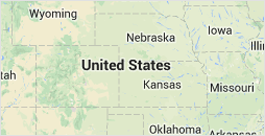Jeson Clarke
PHONE NUMBER : ------
Map

What are Helipads?
When most people think of air travel, they picture traditional planes that require miles of runway to take off and land. However, runways aren't the only thing available to aircraft.
Helipads are unique landing pads purpose-built for aircraft that take off and land vertically. A helicopter is a well-known example of these aircraft, but helipads can also accommodate a vertical take off plane.
What is a Helipad For?
These landing pads offer a safe area for helicopters and other powered lift aircraft to land. Unlike traditional jet turbine planes, aircraft that can generate vertical lift don't require conventional runways. They only need a flat and stable surface for take off and landing.
The great thing about helipads is that they require far less space. A helipad can be as small as 15 meters in diameter. Though, larger helipads of 35 meters or more do exist. What aircraft a pad can handle depend on its size.
Because helipads are space-efficient, you can see them everywhere! Many hospitals have helipads to make it easier for helicopters to transport patients for life-saving care. You'll also see them on top of skyscrapers or private buildings to offer a speedier travel route for passengers taking a vertical take off plane.
What Makes a Helipad Unique from a Runway
Outside the obvious differences like size, helipads have unique construction and design. At a minimum, helipads must be 40 feet long by 40 feet wide. They also must have a non-slip surface for aircraft to land safely.
Helipads can come in various materials, including concrete, aluminum and steel. What materials the landing pad uses will affect the maximum gross weight it can accept. That figure must be visible on the helipad so that pilots can determine if it's safe to land on it.
If you see a helipad, you'll notice it likely has a giant "H" painted on its surface. The color will dictate its purpose. At hospitals, the "H" is vibrant red, making it easier for pilots to spot the landing pad during an emergency. For all other purposes, the "H" is typically white.
Author Resource:-
Jeson Clarke is providing info about sustainable aircraft making for air travel faster, smoother and more affordable than ever. You can find his thoughts at VTOL aircraft blog.
